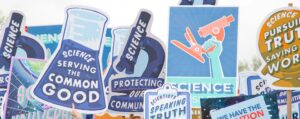
Evidence Reading: How do governments get great?
House of the Parliament of Botswana in Gaborone. The paper discussed in this evidence reading cited Botswana as an example of a government that led an impressive transformation resulting in its ranking of Sub-Saharan Africa’s least corrupt nation in the global Corruption Perceptions Index 2016 by Transparency International.
—————————————————————————————————–
– Blog post by Clara Richards, Director of the VakaYiko Consortium and Senior Programme Manager at INASP’s Evidence-Informed Policy Making Team
I started reading more about how governments can improve their work and drive positive change because I wanted to know how we at INASP can work with governments to improve their policies by putting research and evidence at the heart of their development agenda. I discovered an endless and exciting literature. However, it is mainly driven by the same authors who are part of the ‘Building State Capability Programme’ , and although they have great insight, it would be good to see research in this area expand.
The last paper I read – ‘How Do Governments Get Great’ – looked at how these institutions change and accomplish positive outcomes. It discusses two theories about how governments become great: one called ‘Solution and leader driven change’ (SLDC) and ‘Problem Driven Iterative Adaptation’ (PDIA). The former argues that ‘great governments emerge when the right policies are introduced in times of crisis by top down leaders who then have stable power for a long-enough period to drive implementation’. The latter holds that ‘great governments emerge when agents (e.g. policymakers within a public institution) interact in new ways in gradual, iterative processes that yield locally determined responses to problems (that mature with time as more agents get engaged and buy-in to the changes)’.
Ten cases were studied and analysed by the authors to see how the two theories apply in reality and which is more effective. The cases show moments in which governments led an impressive transformation and represent areas where governments commonly struggle to effect change, like managing political transition, fostering growth, social service provision, etc.:
- Economic success of South Korea and Singapore
- Economic improvement in Turkey
- India’s success eradicating polio
- USA’s mission that put a man on the moon and its role in the civil rights movement between 1945 and 1975
- South Africa’s transition from apartheid and civil unrest to constitutional democracy
- The ‘Medellin Miracle’, the city that had been dominated by violence under Pablo Escobar and achieved lower levels of crime than those of Washington DC and Miami
- Botswana achieving the status of ‘Africa’s least corrupt nation’
- Sweden’s public administration reforms
Through these cases the authors have found who, what, when makes governments great during a time of change and how that change is sustained. I have listed some factors based on the PDIA theory of change that I found particularly interesting:
What helps governments change to become great?
‘Plans are of little importance but planning is essential’ – Winston Churchill
An environment that promotes creativity and flexibility allows systems to achieve greatness. Some findings from the study show that:
- Transformation emerges when systems open up, foster heterogeneity and adopt rules that promote new ways of interaction between agents
- Greatness is achieved when there are opportunities for learning, distributing knowledge and expanding capabilities which makes the system more adaptive and able to respond to pressing problems
- Positive change is enabled when it is driven as a continuous process, not a one-off event
Who leads these changes to achieve greatness, and how?
‘Great governments need a crisis to emerge but not all crises produce great governments’ – Matt Andrews
It seems that rather than one individual driving change forward, sustainable transformation happens when it is led by a group of people and multiple leaders emerging at different stages of the process. Findings show that:
- Leadership in complex settings emerge when one connects the different agents altogether allowing adaptive creativity and change to emerge from the interaction vs getting followers to follow the leader’s wishes
- Leadership occurs when interacting agents, e.g. policymakers, generate adaptive outcomes
- As the situation changes different people may act as leaders by leveraging their skills and experiences
- It involves multiple agents distributed across social context – not in one organisation or position of power
When do the changes that make governments great occur and why?
It is usually believed that crises are catalysers of change. The study suggests rather, that crises reveal the change that has been emerging gradually. This means that previous events prepare and ‘make ready’ for the crisis to catalyse change rather than the crisis being the ‘cause’ or ‘element’ that independently triggered change.
How are great governments sustained and how is change implemented to achieve results?
‘Implementing at the edge of chaos which is a constantly shifting battle zone between stagnation and anarchy’ – Matt Andrews
Great governments are sustained if they coach and shape implementation iteratively. Some tips from the study:
- Great governments interact, are creative and adapt throughout implementation so that solutions can be fitted to the context
- Although organizations are simultaneously creative and adaptive they also need to have sufficient focus, commitment and grit to complete the task at hand
- Leaders coach and shape the process ensuring the system does not descend into chaos or become rigidly ordered
- Achievements unfold iteratively over time as multi-agent leadership groups take shape and expand the reach of the change process
- Overly-controlled governments should be avoided as they become impotent in the face of complex challenges
- Sustaining and implementing change will involve many unreliable dimensions and will not have easy solutions
For practitioners in international development that work supporting governments to drive change, this is an enlightened literature. I can’t help wondering what the best way for external stakeholders to support this process is. I work with an international network of extremely talented people all eager to contribute meaningfully to positive change. What is the best way of using these invaluable lessons to support positive, locally driven change? A wider debate is needed.

 Next Post
Next Post


